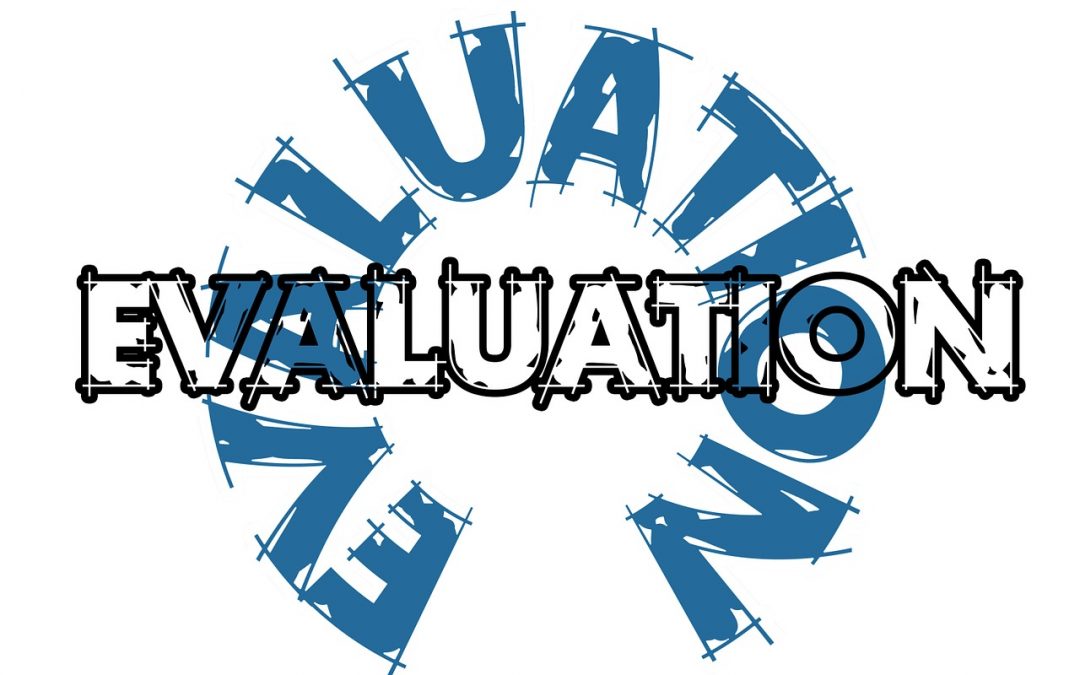
by Employment Screening Alliance | Oct 11, 2016 | employment background check
Employment Background Check | Double-Check: Re-Screening Employees
Employment Background Check | You’ve run a complete background check on all your employees. So you’ve got a safe, fully-vetted workforce, right?
Not necessarily.
While a thorough and professional background check provided a profile of each employee at the time he or she came on board, things may have changed. Times change, conditions change, and people change. And without occasional or regularly-scheduled follow-up background checks of personnel, problems may arise that could seriously impact your business.
Consider: Unlike candidates wishing to join your company, people you’ve already hired may now have access to highly-confidential information including your most sensitive files, phone records, business transactions, contact information, personnel data, and financial secrets. And what they do with such knowledge can seriously affect your company’s brand reputation and even its stability.
Also remember that your employees are in constant contact with your other staff, as well perhaps, with your vendors and your valuable clients. Misinformation, disinformation, innuendo, rumors, and outright lies spread by a disgruntled employee can decimate a business.
If an employee has developed personal problems since his or her initial background check – and you’re in the dark about them – your firm and your other employees could be in jeopardy.
For example, let’s take Susan. She’s been a great manager for five years, following thorough criminal, motor vehicle, and reference checks conducted when she applied for employment with you. Since then, her record’s appeared flawless – “appeared” being the operative term. In fact, she’s being given a promotion!
Actually, last year, Susan got in a tiff with another driver. She lost her cool and punched the other motorist. Someone called 911, the police showed up, and Susan was arrested for assault and battery. She was convicted and got probation.
But you never knew about it.
You also weren’t aware that Susan’s problems escalated. She continued to have anger issues and her significant other left her. Susan fell into deep depression as well as debt. Without a second source of income, she took a second job at night to pay her bills. And then she even began to occasionally steal from your company.
A re-screening could have uncovered the conviction, and may have nipped further problems in the bud. Instead, Susan’s problems have become your problems.
You may want to evaluate whether or not a follow-up background check is legally permissible, and may be prudent for an employee who may have come onboard before you implemented your current background screening policy and practices, and wasn’t screened as thoroughly as you would today.
If a re-screening uncovers nothing, it validates your initial decision to hire that employee, which may instill greater respect and confidence in your personnel security practices.
So consider running another employee background check when someone is promoted, switches departments, or if their last screening was long ago.
HireRight recently surveyed a number of its clients and 42% said they either presently rescreen employees or may begin rescreening employees in the future. The practice is most prevalent in the transportation sector.
Make sure you know your state’s laws before screening current employees. Include your position on subsequent background checks in your company policy, and distinguish between pre-employment and screening of your existing employees. You’ll also want to discuss background check notice and authorization requirements as they may differ from state to state.
Background checks are vital to help ensure you’re bringing on-board a trustworthy and qualified candidate. But conducting routine checks for employees is equally important to facilitating a safe, secure and dependable workforce. -HireRight
Learn what ESA can do for you! Call 866-830-3724 to discuss employment background check services or complete the form on www.esascreening.com now!

by Employment Screening Alliance | Oct 10, 2016 | Fingerprinting
Fingerprinting | The Shift in U.S. Immigration Pt. 2
Fingerprinting | It’s a Wide, Wide World – The Case for Experienced Global Screening Services
More and more companies are logically turning to global screening programs, but it’s important that they be deliberate when choosing a background check solution that offers such extended resources. The playing field is not level and there are numerous elements that should be considered.
Beyond the obvious requirement to select a background check firm that has local reach in multiple countries; top-tier background check services may offer personnel who speak the local language. That’s not as much a “given” as one might assume. A native speaker can quicken the process as well as help to avoid perilous miscommunications due to linguistic variations. Just as in the English language, there are nuances in most languages that may come to bear when conducting a background check. For example, “turnover” in American business may be understood as the rate employees are replaced; in France, the same word may be used in the context of the amount of money a business makes. A native-speaker can distinguish between nuances and have make better sense of the vernacular, local idioms and figures of speech.
One may also want to take into account that countries may have multiple languages and dialects spoken within their borders. In China, dialects of the Chinese language include not only Mandarin but also Wu, Gan, Xiang, Min, Hakka, Jin, Huizhou, Pingua, and Yue. India officially recognizes 23 different languages. Consider the linguistic obstacles that may be encountered when verifying the background of an individual who attended and worked in two or more regions of India where different languages are spoken.
Finally, remember that a background check verified overseas may add time to the candidacy process. Hiring Managers as well as candidates should be apprised that verifications in countries outside of the U.S. may take longer for reasons including the operational challenges of soliciting data from the various in-country sources, and the fact that some countries may not place as much importance on these verifications or the need to respond at the same pace as the United States. Being aware in advance of such realities can save companies a great deal of aggravation.
And the same goes for their candidates; the last thing a company spending copious amounts of time and money seeking to attract highly-specialized personnel wants to do is alienate candidates because they didn’t keep the candidate informed of their background check status, particularly if a background check may take additional time. It may behoove organizations to provide information such as authoritative FAQs and videos that explain the background check process, how to best prepare, and help increase the comfort level for those candidates who have background history or previous employment or education from overseas.
Conclusion
The shift in immigration patterns coupled with changing demands for candidates with specific skills which may draw qualified applicants from outside of the U.S. offers American businesses a new and serious consideration in running their background check program. The flow of immigrants seeking U.S. jobs is expected to continue: mobility levels are predicted to grow by 50% by 2020. Applying best practices – such as those highlighted above – when initiating, extending or revamping an organization’s screening process may help provide better hires. -Hire Right
Learn what ESA can do for you! Call 866-830-3724 to discuss fingerprinting services or complete the form on www.esascreening.com now!

by Employment Screening Alliance | Oct 9, 2016 | Employment Screening
Employment Screening | The Shift in U.S. Immigration: Background Check Pt. 1
Employment Screening | During this presidential election cycle, immigration is – or perhaps “remains” is a better term – one of the foremost and most controversial topics.
With immigration discussions in the United States, many believe the country that is the source of most new immigrants is Mexico. Yet, in spite of this popular misconception, most new immigrants to the United States do not come from Mexico. This shift could have an impact on employment screening programs that don’t reach as far as current hiring trends suggests is necessary.
Most newly-arrived immigrants arriving from countries other than Mexico
According to an analysis of census data, a country other than Mexico is the source of newly-arrived immigrants in 37 states within the United States. In fact, since 2005 there has been a rapid and dramatic shift away from Mexico as the country producing the most immigrants to the U.S.
Ten years ago, the story was different. In 33 states, Mexico was the most common source of new immigrants (those in the U.S. for a year or less). The rich job market for unskilled labor and economic conditions in Mexico attracted vast immigration from south of the border. But the downturn in home construction (a major source of employment for immigrant workers), stricter immigration enforcement, an improved job market in Mexico, the Great Recession in the United States, and a simultaneous accelerated demand for employees with technical, medical and scientific skills changed that tide quickly.
The result has been a dramatic slowing of immigration from Mexico, as the pace of immigration from India, China and other nations has significantly ramped up. In 2014, close to 428,000 new immigrants arrived from India and China, more than twice the number from 2005; while new immigrants from Mexico dropped by two-thirds.
The role of Visas
Visas for high-skilled labor play an important role in this shift. In 2014, more than 160,000annual H-1B visas for high-skilled workers were held by immigrants from India. Chinese immigrants held 87 percent of about 8,800 EB-5 visas for investors who create jobs. And of the 150,000 L-1 visas for managers or skilled employees transferred by their employer from overseas to U.S. offices, about a third went to personnel from India and China.
Possible Effects on employment screening or background Check Programs
The U.S. remains the premier destination for immigrants from throughout the world. Since the country’s inception, new arrivals to our shores have brought rich, diverse talents and skills along with a drive to succeed, and continue to add to the fabric of American culture. But companies across the land recognize now more than ever the need to carefully screen new candidates from foreign shores, and are seeking background check processes that extend to Europe, Asia and beyond. For both U.S.-only businesses as well as organizations with both domestic locations and foreign presence, the inability to effectively verify records, or search for criminal records outside the U.S., without the assistance of highly-qualified experts in the field – may result in a bad candidate experience, hurt the company’s ability to recruit, limit talent, and increase risk. -Hire Right
Learn what ESA can do for you! Call 866-830-3724 to discuss employment screening services or complete the form on
www.esascreening.com now!

by Employment Screening Alliance | Oct 8, 2016 | Fingerprinting
Fingerprinting | Legal Marijuana: New Challenge Pt. 2
Fingerprinting | As a best practice, a company’s policy on marijuana use should first and foremost follow the legal requirements of the state and relevant federal regulation (if applicable) and, if there are none, reflect the responsibilities and expectations of the job, as well as the company’s risk threshold.
Taking into account your talent pool and talent acquisition efforts.
Regardless of job requirements, employers must also contend with the pressing talent shortage, which may be exacerbated by the expanding map of marijuana legalization and changes in the way society views its use.
The New York Times recently uncovered unsurprisingly that some employers who screen for marijuana – including in states where it’s still illegal – are, indeed, struggling to fill jobs because of the pervasiveness of marijuana use.
This is true of the ski industry in Colorado, for example, where employers are finding that if they do have policies against marijuana and screen for it, they find it challenging to recruit candidates into new positions and retain employees that can pass a drug test.
It’s a delicate balance, especially in safety-conscious industries.
Fully realizing your company’s own risk threshold as well as benchmarking against what your competitors or other companies in your geographic proximity are doing – as you’ll vie with them for talent – is also important when building your policy addressing marijuana use.
Further complicating the matter is the delicate dance employers and candidates engage in ahead of a hiring.
If a candidate realizes halfway through the process that there’s a drug screen that he or she isn’t going to pass, they will likely stop the prospective employer throughout the interview and evaluation process.
This is why developing a clear marijuana policy – whichever way an employer may land on the issue – that can be communicated early in the candidate screening and onboarding process is critical, saving time and money in a competitive search for talent.
Balancing impact on culture and best practices.
Consider the variations in marijuana screening policies between a Silicon Valley start-up or a graphic design firm versus a law or accounting firm.
There are some industries and jobs where prohibiting and screening for marijuana usage may not be needed or be a fit for the organization.
There are some for whom it’s not only critical but may also be legally required.
Either way, an organization’s culture will undoubtedly be impacted.
As Peter Drucker said, ‘culture eats strategy for breakfast.’ Culture should be considered when developing and introducing marijuana-related policies.
As a best practice, policies should fit with company DNA, protect the company and workersand consider the aforementioned federal, state, and industry regulations.
This decision warrants consultation with an employment attorney and HR leaders, but also should involve deliberation at the executive level – the gatekeepers of company culture.
Marijuana in the workplace is a complex issue, and one that will only require more attention as states continue to legislate on this issue.
It is one that business leaders – and job seekers – should be considering now, as its impact has already arrived.
The talent shortage may be one of the most surprising and unintended consequences of marijuana legalization, but the others are no less challenging.
Smart business leaders will take time to consider a policy now in an effort to avoid litigation and liability later. -HireRight
Learn what ESA can do for you! Call 866-830-3724 to discuss fingerprinting services or complete the form on www.esascreening.com now!

by Employment Screening Alliance | Oct 6, 2016 | Employment Screening
Employment Screening | 5 Hiring Manager Interviewer Fails
Employment Screening | Your recruiter has scoured scores of resumes to find the perfect candidate, phone screened and met in person the best of the lot, and now all that’s left is to bring the most qualified job seekers in for an interview with you, the hiring manager.
You can almost see the finish line and look forward to learning exactly how the candidate will contribute to your company’s success.
And here’s where things can go south.
Take it from seasoned recruiters: Hiring Managers can turn off an in-demand job candidate with even the slightest negatively-perceived detail and possibly lose a superstar.
These recruiters recommend conducting every interview with all possible professionalism and good manners and avoid five potential pitfalls.
Mess up one or more and candidates can easily damage your employment brand by simplysharing their negative experience about your interview process through their social networks.
Just as you know how to pick up on verbal and visual cues from your candidates’ demeanor during an interview, they too can read your attitude – which may affect what they tell their peers about your company and whether or not they accept your job offer.
Here are five tips to provide your hiring managers to help keep a great candidate enthusiastic about joining your company:
1. Pay attention
If you act disinterested during an interview, it’s going to show.
Your eyes may wander.
You may gaze out the window or at a photo on your desk.
That reflects poorly on you and the company.
The candidate might remember a lack of interest.
So pay attention to everything they say and be engaged in the interview.
Nod your head, smile, or do whatever it takes to let them know they’ve got your attention and that you’re actively listening.
2. Be aware of your body language
You certainly know a lot about a candidate by how they sit, look you in the eye, cross or uncross their arms and legs.
Consider how your posture or gestures may reveal lots to the candidate across the desk.
Try to avoid crossing your arms, fidgeting, playing with a pen, leaning far back in your chair, and showing other physical “tells” that indicate you’re not interested in the candidate.
3. Smile
Granted, an interview isn’t happy hour or an evening at the local comedy store.
But looking dour when greeting the candidate at reception, throughout the interview, and when you bid the candidate farewell, can be a real turn-off.
Even if the candidate attempts a bit of humor and it falls flat, a polite smile can go a long way.
So now and then, show them your pearly whites.
4. Don’t dwell only on his or her resume
An interview is the chance to not only dig deeper and gather context for the achievements the candidate has provided, but an opportunity to get to know the candidate as a person.
So in addition to asking about what he or she has done in the past, have some probing questions ready that get the interviewee to think well beyond the “tell me about yourself” questions (that they probably already found a stock answer for).
Be familiar with their employment screening before you sit down with them, so you don’t spend this valuable time poring over their resume as if you’re seeing it for the first time.
5. Maintain eye contact and shake hands like you mean it
This is another one that works both ways.
You may not feel comfortable with a job candidate who spends most of the interview staring at the ceiling as if all the answers were up there.
And if your eyes wander, the candidate will notice as well.
Always look the candidate in the eye when you welcome him or her into your office or conference room, and – without staring and probably scaring the candidate – return their gaze politely as they speak, and when they leave.
A firm but not knuckle-crushing or, conversely, dead fish handshake will likewise be appreciated and speak to your professionalism and interest.
According to the ever authoritative Wikipedia, “A tell in poker is a change in a player’s behavior or demeanor that is claimed by some to give clues to that player’s assessment of their hand.
A player gains an advantage if they observe and understand the meaning of another player’s tell, particularly if the tell is unconscious and reliable.”
For your hiring managers, they might not even be aware of their “tells” and it may be beneficial to realize that all those little things they do while conducting an interview may reveal to the candidate – for whom this hour may be the most important time in their career – just how engaged or how distant you are. -HireRight
Learn what ESA can do for you! Call 866-830-3724 to discuss employment screening services or complete the form on
www.esascreening.com now!

by Employment Screening Alliance | Oct 5, 2016 | Background Screening
Background Screening | Hiring a Marketing Expert Pt. 2
Background Screening | 3. Make sure they are proficient in digital marketing
You have to be aware of the current trends. The market is not the same as it was several years ago. Businesses and background screening are no longer chasing their customers down, but instead, they are designing strategies to attract them and engage them in their products and services. The digital era provides an abundance of opportunities for your business. Many of those can be used to expand and grow your business.
The team of marketing experts you are looking for should have the right knowledge. They should be able to understand social media marketing, PPC and SEO. The wider the skill set, the greater the chances that they will be able to design a unique marketing strategy for your specific business needs that will work well with all of your objectives.
A good digital marketing expert knows that mobile marketing has become the most important marketing factor. It has a great impact on how your website will be designed, what content you will be relying on, what is the desired user experience and in what ways your services and products will be promoted.
4. If they offer a free consulting gig, say yes!
It is important to understand that you should not be looking only for a skill set. The bond between you and the marketing expert should be more like a partnership. If you come by an agency or an expert that wants to provide a free consulting session, go for it. This is the best way to see and feel the relationship between you.
There is a big chance that there will be some differences when it comes to how you want to get things done. But, if you are speaking to an expert, they should hopefully have knowledgeable arguments and previous case studies to back up their suggestions.
During your free consulting session, you will find out if they have complete insight into your business philosophy and if they get the idea behind your products or services. And, what’s more important, you will hear how they think and what their approach to marketing is before you regret signing a contract.
5. Check out their website
This is a great way to check out any marketing expert or agency. We live in the internet era. In case some of the so called “experts” don’t have a website, you should take our advice and skip them. On the other hand, not all marketing experts and agencies that have a website are necessarily good ones.
Take your time to browse through their site. See what type of content they are using and what effect it has on you. You should be able to find content that explains how they address specific issues and problems related to marketing. There should also be a list of benefits they are offering prospective customers.
And, in the end, do you feel compelled to take action and contact them to find out more about their services and what they can do for employment screening services? If they are able to market and sell their own services, there is a good chance they will be able to successfully market and sell yours. -Recruit Loop
Learn what ESA can do for you! Call 866-830-3724 to discuss background screening services or complete the form on www.esascreening.com now!

by Employment Screening Alliance | Oct 5, 2016 | Employment Screening
Employment Screening | Hiring a Marketing Expert Pt. 1
Employment Screening | For a business and employment screening agency to be successful, due to the current state of global market, it has to be able to adapt quickly. Markets are oversaturated and very dynamic. Businesses around the globe are always inventing new solutions that will ensure stable growth and increased revenue. Managers are becoming more important, ensuring that everything is handled well from the inside.
On the other hand, there is also very important work to be done. The part of your business that manufactures products or provides services is working very well. Human Resources has done a great job and you’ve ended up with great staff. But, your company has to make a living by selling its products or services, and you need to get people interested in what you have to offer.
That’s where marketing experts come into play. Their main objective is to design a strategy that will make your products and services alluring to prospective customers.
A marketing expert will have a look at your business objectives and then assess how your public presence is currently set up. You will also be able to find out if your brand’s message is well-aligned with business objectives. A true expert will check your public website and potentially recommend better optimization. And, in the end, you will get a report where you can clearly see various metrics and and all possible areas that need improvement.
As you can see, the company can prosper by signing a contract with a good marketing consultant. Keep in mind that marketing experts will help you put a strategic marketing plan together and they’ll be there for you only during the initial stages of the implementation process. All other aspects of the marketing strategy will need to be handled by your own staff.
If you don’t have the necessary assets, hiring a marketing agency will ensure that all marketing strategies can be handled externally.
What remains are the questions about selection criteria. This is why we have compiled this list of what you should take into consideration when hiring a marketing expert.
1. Check their client portfolio
This should be your priority. Marketing is tough and challenging and it’s not something someone can walk into right after college. You should get the best option for the budget you’ve planned. A strategist who has a lot of experience will be able to design a solid marketing campaign and offer suggestions based on what works.
True marketing experts will have the skills to identify what your company really needs and to understand the message you want to convey to your prospects. The more companies they have worked for, the greater the chances that they have been tried and tested in a variety of situations. This knowledge is a very powerful tool that you want to have in your arsenal before you start to conquer the market.
With Internet access, anyone can become a “marketing expert” in just a couple of days. Don’t let that pumped up professional vocabulary sway you into making the wrong decision. Take your time and give all of their clients testimonials a thorough read. Better yet, try to speak to a few previous clients personally.
You want to focus on measurable statistics and what types of businesses they’ve designed a strategy for. If you don’t want to hire a marketing consultant for a longer period of time, it might be a good idea to outsource the marketing project and hire a team of experts to do this job for you.
2. Check them out on LinkedIn
LinkedIn has become a powerful tool anyone can use to reach out to their peers and prospective customers. It has become very popular in business-to-business selling and recruitment. There is no better way to check if they are competent than checking if they are able to market and sell their own services.
Another thing that’s great about LinkedIn are recommendations. These are not editable, like the ones you might read on websites. LinkedIn Recommendations are genuine and are actually attributed to the owner of a certain profile. They are written by experts in the field and can provide valuable information about the people you are interested in hiring. -Recruit Loop
Learn what ESA can do for you! Call 866-830-3724 to discuss employment screening services or complete the form on www.esascreening.com now!

by Employment Screening Alliance | Oct 4, 2016 | Employment Screening
Employment Screening | Legal Marijuana: New Challenge for Employers Pt. 1
Employment Screening | Marijuana laws are changing across the country, and having a surprisingly profound impact on employers – not just in Colorado.
In addition to the existing 24 states and District of Columbia that have legalized marijuana for medical use and the four states that allow recreational use, 13 states are currently considering legalization measures – eight of which will vote on this matter in November.
Businesses must now determine how to operate in an era when marijuana, still federally illegal as a Controlled Substances Act Schedule 1 drug, is increasingly being legalized at the local and state levels.
With this quickly evolving landscape, now is the time for companies to consider their position regarding the use of marijuana by their employees, but according to a survey recently released by HireRight, only 5% of employers say they (formally) accommodate marijuana use, 39% do not accommodate marijuana use and 52% say they don’t have a policy either way.
Many employers and job seekers aren’t sure where state laws end and federal laws begin.
And even where it may be legal at the state or local level to purchase and use marijuana, many states have specific exemptions for employers which are further exemplified by court cases that have upheld an employer’s right to not accommodate an employee’s marijuana use – whether medically recommended and legalized pursuant to state statute or in a situation where an employee has the right to purchase and use marijuana in their home state.
These disparities have created confusion for employers and many lack a coherent policy that covers a multi-state workforce.
However, while employers attempt to make sense of existing and changing laws alongside employment attorneys, the growing gap in drug policies is creating liability in hiring practices amplifying the importance of having a clear, consistent and legally acceptable policy addressing marijuana to mitigate risk to the organization.
How can a company determine what policy is the right fit for their workforce and the responsibilities associated with the job?
In certain industries federal law mandates drug screening.
In the transportation sector, U.S. Department of Transportation regulations require that safety sensitive employees be screened for marijuana and other drugs.
For other industries, the lines are a bit more blurry.
Consider an industry like manufacturing, where federal rules don’t explicitly mandate drug screening, but job responsibilities and the use of machinery suggest that it’s probably a good idea.
For positions considered white-collar such as those in corporate settings, for example, fellow employees or clients may not necessarily be in potential physical harm due to marijuana use, but it can have an impact on productivity.
The direct economic impact of illicit drug use directly to employers is $198 billion and the U.S. Department of Labor believes there are 14 million active drug users in the workforce.
That’s $14,000 in employer drug-related costs per drug using employee each year on average. -HireRight
Learn what ESA can do for you! Call 866-830-3724 to discuss employment screening services or complete the form on www.esascreening.com now!

by Employment Screening Alliance | Sep 27, 2016 | Background Screening
Background Screening | How to Get Away With Managing Millennials
Background Screening | Did you know that 75% of millennials have a profile on at least one social media network? That’s quite a lot, especially when you consider there are almost 80 million millennials residing within the US alone.
What’s even more interesting is the fact that as many as 55% of them will post at least one selfie every week. And on average – millennials spend at least an hour per week to get that perfect selfie. That’s a full hour of some high quality self-admiration.
Speaking from the perspective of a millennial – yes, it is evident that we can be a little bit egotistic, to say the least. But what is even more important – we can be quite helpful around the workplace.
In fact, one of the positive aspects millennials can be proud of is the fact that we are a generation that is actively engaged in everything that concerns us. So while some of us are saving the planet as we speak, others are mastering technologies that are shaping the future! This means that we’re not all that spoiled as most of the members of Gen X believe, and probably all of the Baby Boomers firmly accept as an absolute truth.
However, managing members of Generation Y (the millennials) can be a somewhat tedious task. Dealing with delicate personalities with high expectations and no patience can really cause a lot of disturbance in the workplace.
So what are millennials expecting from their bosses? What motivates them, and how can you keep them engaged in their work?
Let’s start with the basics and see what type of a boss millennials respect.
Be a leader, not a manager
Taking the high stand and insisting on establishing an authority over your millennial workers is a fast lane to nowhere. An average millennial will probably smile to your face and then quit without any notice when they find a better job.
However, if you want to keep them around, know that they are looking for leaders, not bosses.
What is the difference? Leaders coach their teams, they identify themselves with their workers and are dedicated to developing individuals and their unique skill-sets instead of labelling their employees.
If you are looking for a way to keep them interested in their job (because they will most probably expect from you to do so), here are a few tips that you should have in mind:
- They need to feel valued;
- They need to have confidence in your leadership;
- They have to actually like what they do;
- They want to progress at work; and
- They want to be appreciated as individuals, not referred to as if they are nothing more than a number.
According to Barnum Financial Group, 60% of millennials need to feel like their work actually matters. They want their opinion to be valued and they want their work to be fulfilling and to actually have a purpose. However, nurturing them isn’t enough. When they arrive at the office, believe it or not, they want to feel like they are home. – Recruit Loop
Learn what ESA can do for you! Call 866-830-3724 to discuss background screening services or complete the form on www.esascreening.com now!

by Employment Screening Alliance | Sep 27, 2016 | Background Screening
Background Screening | 6 Step Checklist to Crafting the Perfect Job Description
Background Screening | I’ll never forget the time I was sitting opposite a client taking a brief for a new position in her team and when I asked her if she had a position description she literally scribbled a few bullet points on to aPost-It note and handed it to me across the table.
Was she serious?
Apparently so.
I should also point out that the all too common “We’re hoping to create the job around the best candidate depending on their previous experience” never really cut it with me either.
So here’s a step-by-step job description checklist for any business owner or hiring manager thinking about bringing somebody new into their team.
Free Guide: This article outlines how to write a job description that is clear, concise and accurately defines the role – in 5 simple steps. Download Now!
1. You can’t not write a job description
It’s not uncommon for an employer to know that they definitely need to bring somebody new into their business, but to not have carefully thought out exactly what it is that the new team member will be doing.
We’ve written about this previously. This is a dangerous way to start. From experience, the very first thing a candidate thinks if their potential new employer (or recruiter for that matter) can’t provide them with a detailed job description is either that the job doesn’t exist, or that the company doesn’t really care much about their employees.
Not a great impression to make.
Similarly no employer wants to hear a team member say, “Sorry but that’s not in my job description”. Every manager wants staff happy to go beyond the call of duty. However the “call of duty” still needs to be documented in some way.
2. The position title must be a true reflection of the role
Don’t make a job title too vague or ‘creative’. You will just confuse people or perhaps even put them off.
Internally you might decide to call your receptionist the “Director of First Impressions”, but on a job description that you share with a candidate during an interview it should still make reference to “Receptionist”.
Here are a few examples of real job titles I have seen on job descriptions that required some ‘translation’ before they really made sense to the relevant candidates.
- Dream Fulfiller = Financial Services Consultant
- Creative Guru = Creative Writer
- Web Wizard = Web Developer
- Office Dynamo = Office All-rounder
- Sales Ninja = Salesperson
A good job title will have the following qualities:
- It accurately reflects the nature of the job and the duties being performed
- It does not exaggerate the importance of the role
- It is free of gender or age implications
- It is generic enough that it can be compared to similar jobs in the industry for the purposes of equity in pay and conditions
- It is self-explanatory for recruitment purposes (in most online job searches, the job title is the main keyword searched). -Recruit Loop
Learn what ESA can do for you! Call 866-830-3724 to discuss background screening services or complete the form on www.esascreening.com now!










